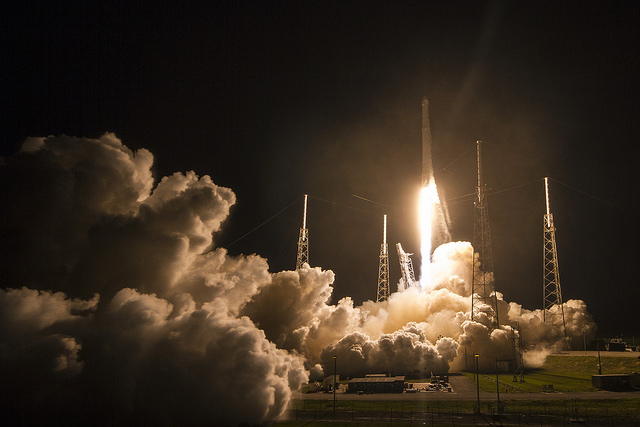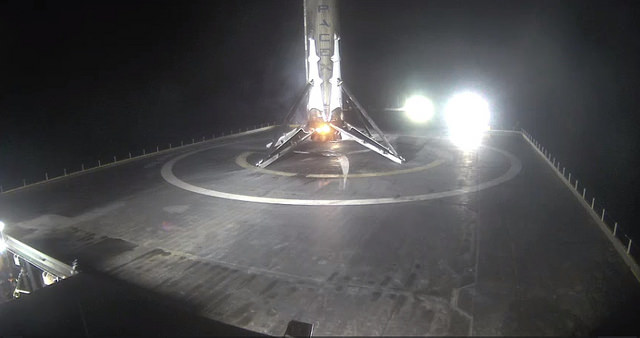Falcon 9 landings become routine
On the morning of August 14, at 5:45 UTC (8:45 am Moscow time), SpaceX quietly and without a special pump, SpaceX launched another Falcon 9 FT, successfully sending a five-ton JCSAT-16 satellite to a geo-transition orbit.

The first stage, which had worked out, made a soft landing on a barge in the Atlantic. The fact that another year caused genuine surprise and delight becomes a chore - failure with the return of the first step, rather than a successful landing, becomes an event.
')

For SpaceX this is the eighth launch in 2016 and the ninth consecutive success. Of the eight attempts to land the first stage this year, five have been successful so far, including three out of five attempts to return when the satellite was put into a geostationary orbit.
Until the end of the year, the company has planned from eight to eleven F9FT launches. The current launch rate is about 1 start per month, but the company hopes to double it by the end of the year. In the autumn, the first re-launch of one of the already-flying boosters is expected - even after deducting two steps dismantled to study and verify the reliability of the F9, the company has already accumulated four reusable steps in the company's hangars. Intensive is the preparation for the first launch of Falcon Heavy, to be held at the end of this year or the very beginning of the next.

The first stage, which had worked out, made a soft landing on a barge in the Atlantic. The fact that another year caused genuine surprise and delight becomes a chore - failure with the return of the first step, rather than a successful landing, becomes an event.
')

For SpaceX this is the eighth launch in 2016 and the ninth consecutive success. Of the eight attempts to land the first stage this year, five have been successful so far, including three out of five attempts to return when the satellite was put into a geostationary orbit.
Until the end of the year, the company has planned from eight to eleven F9FT launches. The current launch rate is about 1 start per month, but the company hopes to double it by the end of the year. In the autumn, the first re-launch of one of the already-flying boosters is expected - even after deducting two steps dismantled to study and verify the reliability of the F9, the company has already accumulated four reusable steps in the company's hangars. Intensive is the preparation for the first launch of Falcon Heavy, to be held at the end of this year or the very beginning of the next.
Source: https://habr.com/ru/post/369581/
All Articles